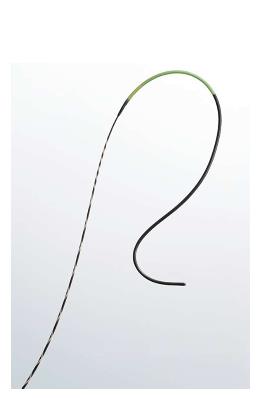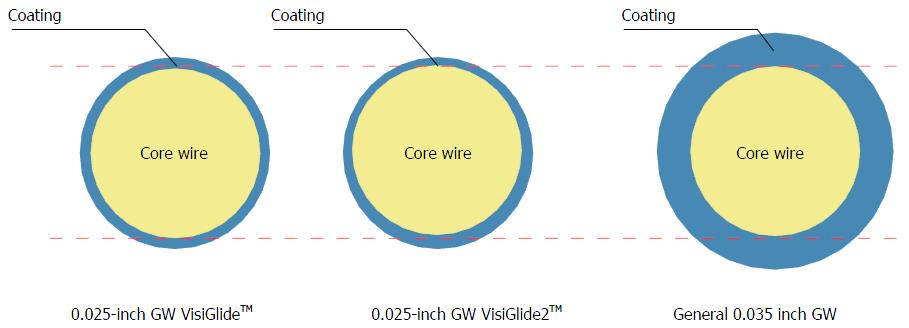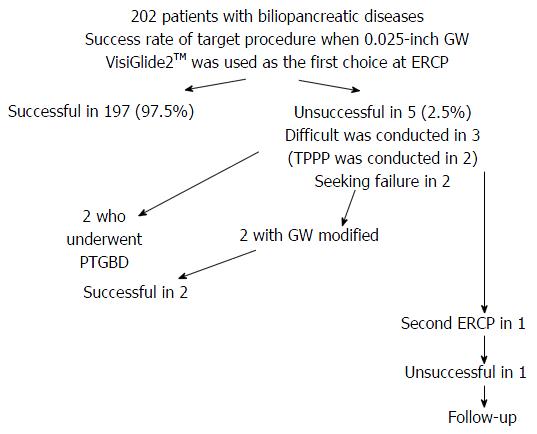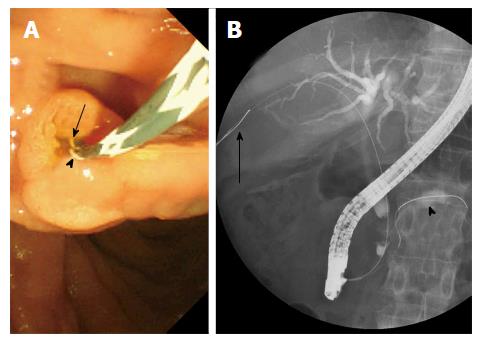Copyright
©The Author(s) 2017.
World J Gastrointest Endosc. Feb 16, 2017; 9(2): 77-84
Published online Feb 16, 2017. doi: 10.4253/wjge.v9.i2.77
Published online Feb 16, 2017. doi: 10.4253/wjge.v9.i2.77
Figure 1 0.
025-inch guidewire VisiGlide2TM. The tip of hydrophilic coating is flexible.
Figure 2 Comparison between 0.
025-inch guidewire VisiGlide2TM, 0.025-inch guidewire VisiGlideTM, and 0.035 inch guidewire. Although it has thinness of 0.025-inch (0.63 mm), its special processing method ensures rigidity equivalent to that of 0.035 inch (0.89 mm). GW: Guidewire.
Figure 3 Result of use of 0.
025-inch guidewire VisiGlide2TM in the endoscopic retrograde cholangiopancreatography as the first choice. ERCP: Endoscopic retrograde cholangiopancreatography; TPPP: Transpancreatic precut papillotomy; PTGBD: Percutaneous transhepatic gallbladder drainage; GW: Guidewire.
Figure 4 Although it has thinness of 0.
025-inch (0.63 mm), its special processing method ensures rigidity equivalent to that of 0.035 inch (0.89 mm). A: 0.025-inch guidewire (GW) VisiGlide2TM placed in the bile duct (arrow)/pancreatic duct (arrow head). The visibility is good under endoscopy; B: 0.025-inch GW VisiGlide2TM placed in the bile duct (arrow)/pancreatic duct (arrow head). The visibility is good under radiography.
Figure 5 Placement of metallic stent using 0.
025-inch guidewire VisiGlide2TM. It was possible to break through the stenosis, to induce delivery and to place stents only with this guidewire.
- Citation: Sakai Y, Tsuyuguchi T, Hirata N, Nakaji S, Shimura K, Nishikawa T, Fujimoto T, Hamano T, Nishino T, Yokosuka O. Clinical utility of 0.025-inch guidewire VisiGlide2TM in the endoscopic retrograde cholangiopancreatography-related procedures. World J Gastrointest Endosc 2017; 9(2): 77-84
- URL: https://www.wjgnet.com/1948-5190/full/v9/i2/77.htm
- DOI: https://dx.doi.org/10.4253/wjge.v9.i2.77













